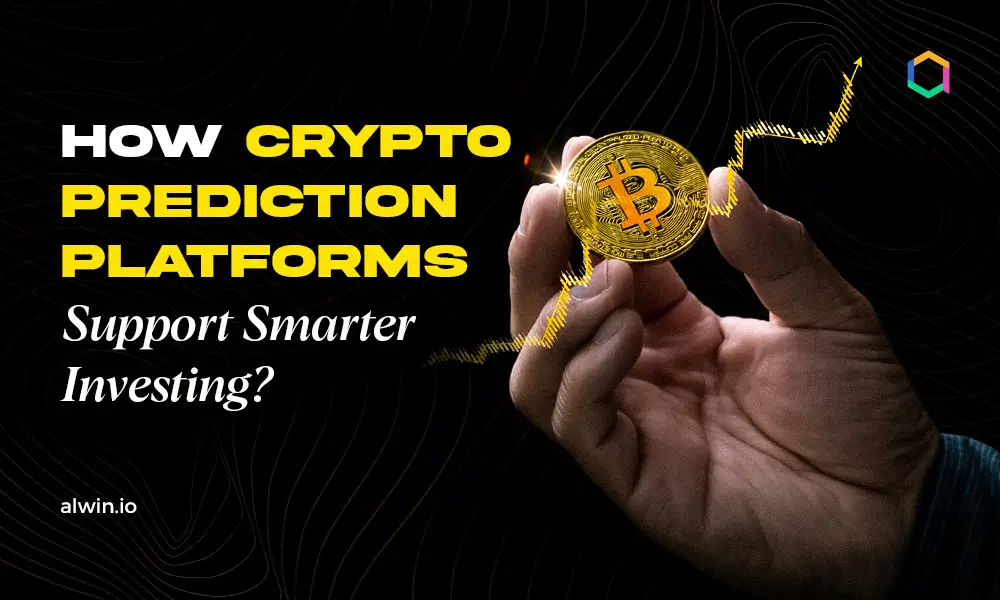In recent years, the term "DeFi" has been circulating with increasing hype frequency within financial circles, promising a decentralized revolution in finance. But what exactly is DeFi, and why has it captured the imagination of investors and enthusiasts alike?
In this blog post, we'll delve into the world of Decentralized Finance, explore its growth in 2024, distinguish between hype and reality, and assess whether investing in DeFi is truly worthwhile.
First, know about DeFi, chief of the blog
What is DeFi?
Decentralized Finance, or DeFi, refers to financial services and applications built on blockchain technology, aiming to decentralize and disrupt traditional financial intermediaries. These services include lending, borrowing, trading, and more, all executed without the need for centralized authorities like banks or brokerage firms.
The current hype surrounding DeFi stems from its potential to democratize access to financial services, eliminate intermediaries, and provide greater financial inclusion for individuals worldwide.
DeFi Growth in 2024
The year 2024 has witnessed exponential growth in the DeFi space, with statistics and trends painting a picture of a thriving ecosystem.
According to recent data, the total value locked (TVL) in DeFi protocols has reached unprecedented levels, surpassing previous milestones.
In 2024, the growth of Decentralized Finance (DeFi) is facing some changes. In the past, big investors, known as venture capitalists (VCs), were putting lots of money into DeFi projects. But in 2023, they started to invest less. This shift in investment strategy shows a change in how people think about DeFi.
Before, there were huge investments of up to $500 million in DeFi projects. But now, those big investments are not happening as much. This change is a big deal because it's different from what we've seen before. Even though some news stories might say otherwise, the truth is that VCs are being more careful with their money when it comes to DeFi.
They are worried about things like the market being unpredictable and not knowing what regulations might come in the future.
Also, in 2023, the Total Value Locked (TVL) in DeFi went up and down a lot. At the beginning of the year, it was about $38 billion, and it reached a high point of almost $53 billion in April. But compared to the record high of $175 billion in November 2021, these numbers are much lower. Now, the TVL is around $46 billion, showing that DeFi is still going strong despite challenges.
Even though there were some tough times for DeFi in 2023, there's hope for growth and new ideas in 2024. While big VC investments might not be as common, DeFi projects are still growing and getting better. They're focusing more on important things like making sure their technology works well, can handle lots of users, and is easy to use.
Daily Active Users (DAUs): DeFi platforms experienced a significant increase in user engagement, with the number of daily active users skyrocketing from approximately 60,000 in early 2021 to surpassing 1 million by the conclusion of 2022, indicating an impressive growth of 1,667%.
Investor Interest: Venture capital flowed into DeFi startups, surpassing $11 billion in 2021 alone, marking a remarkable 130% surge compared to the preceding year.
Notable advancements and developments, such as the emergence of cross-chain interoperability solutions and the integration of decentralized identity protocols, have further fueled the growth of DeFi. Moreover, the proliferation of decentralized autonomous organizations (DAOs) and yield farming strategies has attracted a diverse array of participants to the DeFi landscape.
New technology is also helping DeFi improve. Things like making transactions faster and safer, and allowing different blockchains to work together, are making DeFi more efficient and reliable. These advancements are laying the foundation for DeFi to keep growing and becoming even more important in the world of finance.
In summary, while the growth of DeFi in 2024 might not be as flashy as before, the core ideas and innovation behind it are still strong. As DeFi continues to evolve, it's important for investors and users to stay informed and be ready for whatever changes come their way. Ultimately, DeFi has the potential to change how we think about money and banking, making financial services more accessible to everyone and reshaping the future of finance.
DeFi Hype vs. Reality
While the hype surrounding DeFi is noticeable, it's essential to temper expectations with a dose of reality. The reasons behind DeFi's hype are complicated, including its potential to standardize finance, increase financial transparency, and reduce systemic risks associated with centralized intermediaries.
However, a closer examination reveals the inherent challenges and limitations facing the DeFi ecosystem. Issues such as scalability bottlenecks, security vulnerabilities in smart contracts, and regulatory uncertainties pose significant obstacles to the widespread adoption of DeFi. To illustrate this contrast between hype and reality, let's explore a few highlighting instances where the promise of DeFi diverges from its practical implementation.
Reality Check
Volatility: Crypto markets are susceptible to dramatic swings, exposing DeFi investments to substantial risks.
Security Vulnerabilities: Smart contracts and platforms are not immune to hacks and exploits, leading to potential financial losses.
Regulatory Uncertainty: Evolving regulatory landscapes in different jurisdictions pose challenges for DeFi projects, creating uncertainty and potential hurdles to adoption.
Technical Limitations: Scalability issues and limitations of blockchain technology could impede mass adoption, restricting DeFi's growth potential.
Regulatory Crackdowns: Stringent regulations or outright bans in certain jurisdictions could stifle innovation and limit DeFi's potential, hindering its global reach. Eg: Libya, Morocco, etc.
Market Bubble Burst: Unsustainable market rallies fueled by speculation could lead to a crash, potentially propelling DeFi into the public consciousness.
Really Worth Investing in DeFi?
As with any investment opportunity, it's crucial to weigh the potential benefits against the risks before diving into DeFi. On the one hand, investing in DeFi offers unique opportunities for yield generation, portfolio diversification, and exposure to innovative financial products.
From decentralized lending platforms offering competitive interest rates to decentralized exchanges facilitating peer-to-peer trading, the DeFi ecosystem presents an excess of investment avenues.
However, it's essential to acknowledge the risks and challenges associated with DeFi investments. Smart contract exploits, impermanent loss in liquidity pools, and regulatory crackdowns are just a few examples of the risks investors may encounter in the DeFi space.
The past market trends and economic recessions may have dampened investment in DeFi, but the inherent benefits and features of decentralized finance are propelling it toward a significant and promising future. This assertion is not merely speculative; it is backed by extensive market research and analysis conducted by reputable research papers.
Thanks to its advantages and rapid growth trajectory, DeFi has emerged as a unique and trending market. Being an early adopter in this space can position you as a leader in the financial landscape. Don't overlook the opportunities presented by DeFi. To explore further opportunities, connect with DeFi experts today.
Finally, by understanding the dynamics of DeFi's growth, distinguishing between hype and reality, and conducting diligent research, investors can make informed decisions regarding their involvement in the DeFi ecosystem. However, one thing is certain – the evolution of decentralized finance represents a paradigm shift in the way we conceptualize and interact with the global financial system.
The journey of DeFi is just beginning, and its impact on the world of finance is bound to be profound.



